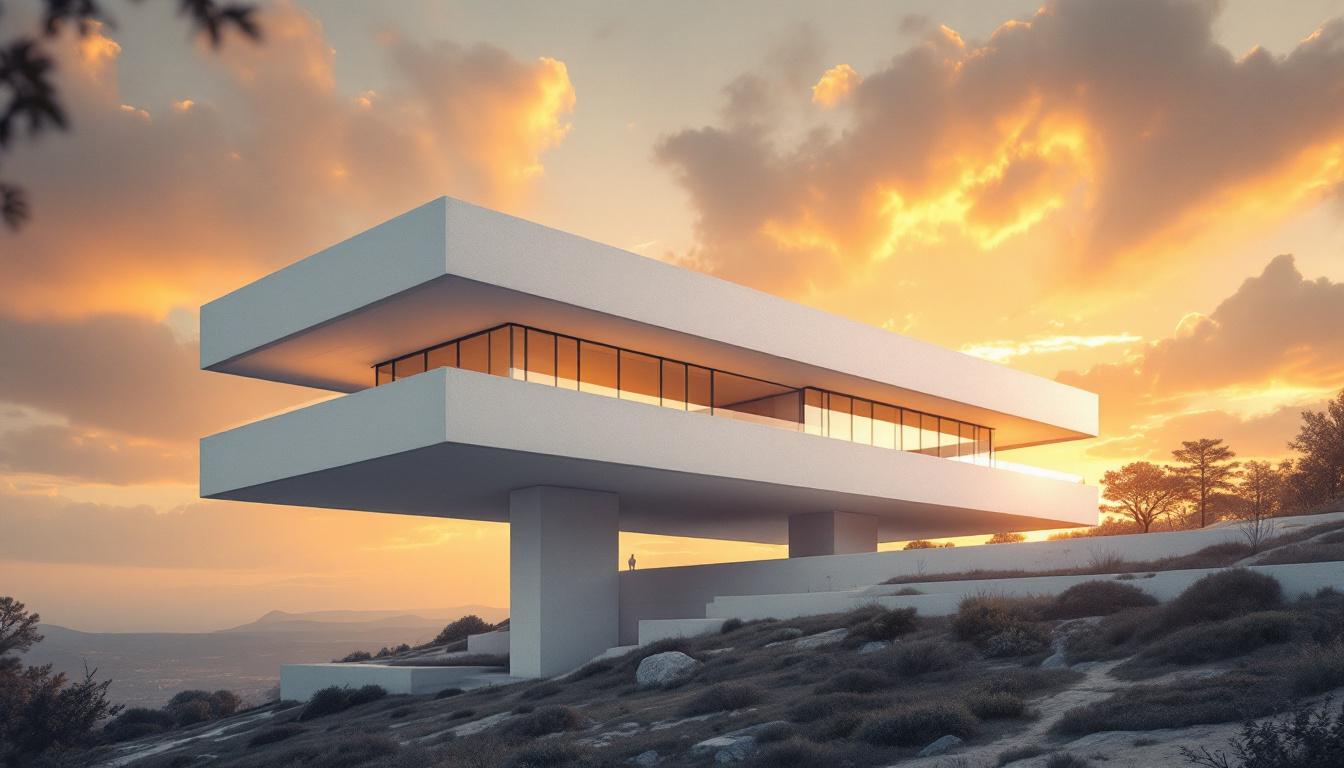Villa Savoye: The Floating Box That Revolutionized Modern Architecture
A concrete masterpiece that seems to defy gravity
Perched on slender concrete pillars in the quiet Parisian suburb of Poissy, Villa Savoye appears to hover above the landscape—a brilliant white geometric form that revolutionized 20th-century architecture. Completed in 1931, this modernist marvel wasn’t just another wealthy family’s weekend retreat; it was architect Le Corbusier’s radical manifesto for a new way of living.
“Architecture is the masterly, correct and magnificent play of masses brought together in light,” Le Corbusier once declared, and Villa Savoye embodies this philosophy perfectly. The building’s stark white exterior, ribbon windows, and gravity-defying design continue to captivate over 90,000 visitors annually, making it one of architecture’s most influential pilgrimage sites.
Where a weekend home became a UNESCO treasure
Originally commissioned by the Savoye family as a simple country escape, the villa transcended its humble beginnings to become a UNESCO World Heritage site in 2016. What makes this structure so revolutionary is Le Corbusier’s application of his “Five Points of Architecture”—pilotis (supporting columns), roof gardens, free floor plans, horizontal windows, and free façades—all perfectly executed in one cohesive design.
The house is a box in the air… only the pilotis exist at ground level. Life in the house has nothing to do with the soil.
This radical approach created what Le Corbusier called “a machine for living in,” where form follows function in every detail. The spiraling central ramp that connects all three levels isn’t just a practical alternative to stairs—it’s an “architectural promenade” that guides visitors through a carefully choreographed spatial experience.
An iconic design that nearly disappeared forever
Villa Savoye’s journey to iconic status wasn’t always smooth. After the Savoye family abandoned it during World War II, the building served as a hay storage facility and nearly faced demolition in the 1960s. A campaign by architects and historians ultimately saved it, leading to its designation as a historic monument in 1965—while Le Corbusier was still alive, a rare honor that underscored its exceptional significance.
Today, walking through Villa Savoye feels like stepping into an architectural time capsule, with its pristine white surfaces, carefully framed views, and brilliantly engineered spaces. The rooftop solarium, with its curved walls embracing the sky, remains one of architecture’s most photographed spaces—a testament to Le Corbusier’s genius for creating emotional responses through pure form.
A perfect day trip from Paris
Located just 20 miles northwest of Paris, Villa Savoye makes for an ideal excursion for architecture enthusiasts and casual visitors alike. Getting there is straightforward: take the RER A train to Poissy station, followed by a short bus ride or 20-minute walk. The villa welcomes visitors from 10 a.m. to 6 p.m. (May-August) or 5 p.m. (September-April), though it remains closed on Mondays and certain holidays.
The €9 admission fee (€7.50 for groups) includes access to all areas of this architectural gem. For those seeking deeper insights, guided tours in English run on Tuesdays and Fridays at 2:30 p.m., offering fascinating context about both the building and its visionary creator. Combine your visit with exploration of Poissy’s medieval abbey church or a stroll along the scenic banks of the Seine for a perfect architecture-focused day trip.
For travelers interested in modernist pilgrimages, Villa Savoye pairs wonderfully with Helsinki’s design-forward architecture or the traditional fortified villages of France for an interesting contrast.
Capturing Villa Savoye’s timeless beauty
Photographers will find endless compositions at Villa Savoye, from the rhythmic pattern of pilotis to the play of shadow and light across interior spaces. Visit during golden hour for the most dramatic effect, when sunlight filters through the horizontal windows and creates striking patterns across the minimalist interior. The rooftop terrace offers particularly compelling compositions against the sky, especially during sunrise when golden light bathes the structure.
The curved glass walls of the ground floor create fascinating reflections of the surrounding landscape, while the spiral ramp offers perspectives that shift with every step—much like sacred Japanese mountain paths that reveal new vistas as you ascend.
Villa Savoye isn’t just a building; it’s an idea, a new way of thinking about space and living that continues to influence how we design our world today.
Whether you’re an architecture aficionado or simply curious about revolutionary design, Villa Savoye stands as a testament to human creativity and vision—a building that forever changed our understanding of what architecture could be, much like how ancient villages transform with the seasons while maintaining their essential character.
